Shayda directed by Noora Niasari and is executive produced by Cate Blanchett through Dirty Films premiered at opened Sundance Film Festival. Cate and Zar Amir-Ebrahimi who leads the film spoke to Deadline about their involvement in the making of it.
More interviews for TÁR promotion have been released. Check them out below.
Cate Blanchett & Zar Amir-Ebrahimi on Noora Niasari’s ‘Shayda’ & Its Iranian Perspective
Noora Niasari’s debut feature Shayda. The film, which is described as a “love letter to mothers and daughters everywhere” and opened Sundance’s World Cinema Dramatic Competition last week, sees Zar Amir-Ebrahimi star as Shayda, a brave Iranian mother who finds refuge in an Australian women’s shelter with her six-year-old daughter (played by Selina Zahednia) after fleeing an abusive relationship.
Based on Niasari’s own mother, who fled an arranged marriage to raise her daughter in Australia, Shayda takes place over the Persian New Year, when the mother-daughter duo take solace in Nowruz rituals and new beginnings but when her estranged husband reenters their lives, Shayda’s path to freedom is jeopardized.
For Amir-Ebrahimi and Cate Blanchett, who exec produces the film via her Dirty Films banner, the story is exactly the kind of project that each feels compelled to get involved with.
“I’m not that interested in doing a comedy or something that doesn’t really change anything in our society,” confesses Amir-Ebrahimi. “Life is short and if I can shoot two movies per year that make a difference or make a change in this world, then that’s important.”
Blanchett, who was nominated for a Best Actress Oscar yesterday for her role in Tár, and Andrew Upton (her husband and Dirty Films co-founder) were brought the project from producer Vincent Sheehan, whom Blanchett had worked with on Little Fish in 2005.
“Vincent and Noora had been developing Shayda for some time and they brought it to us toward the end of the development process to help secure financing and key cast members,” Blanchett tells Deadline. “We knew this story was strong and had perspective unlike any Australian film we had seen before. It’s an intensely personal and domestic scenario but the story Noora drew out of it, we felt had wider cultural resonances. Noora’s short films [17 Years and a Day, Tâm] proved she was a visceral filmmaker with an emotionally rich point of view.”
In September, while the film was in the editing suite, 22-year-old Mahsa Amini was killed in Iran after being arrested by morality police in Tehran for allegedly violating the country’s strict rules requiring women to cover their hair. Her death sparked outrage in the country and since then, more than 500 people have been killed in Iran as ongoing protests see women fight for their rights.
Both Blanchett and Amir-Ebrahimi admit that it has shaped the way they look at Shayda as Iran finds itself in the midst of the biggest revolution since the year of its birth.
“The current situation in Iran is horrifying and advancing each day into darker waters for women,” says Blanchett. “In Noora’s deft hands, Shayda, whilst set firmly in Australia in the 1990s, powerfully resonates domestic personal tribulations into an urgent cultural conversation.”
Amir-Ebrahimi adds, “This violence towards women happens everywhere. But in Iran, the system doesn’t lead you to have your basic rights as we know now. Women in Iran are second class citizens in law and that’s why protection against domestic violence is low and even divorce, or how you share your life, everything is ten times more complicated than in any other country.
“When I see Iranian women right now and someone like Noora’s mom and how she’s strong and she became even stronger out of this story and how she saved her life and her child’s life, I really appreciate it.”
She adds, “It’s important to let women talk about themselves and make these kinds of movies about their own female journey.”
For Blanchett, she’s keen for audiences to take away a nuanced perspective on the issues that Shayda throws up.
“The most powerful and lasting effect of dramatic narrative is not ‘goodies and baddies’, but the murky spaces of motivation and desire and the more complex understanding of social and cultural power relations. Noora’s work has a clear moral compass and simple instructive melodrama. Shayda is tender and heartbreakingly vulnerable in its exploration of a disintegrating family, which anyone of any gender or culture can hopefully make a connection with and understanding.”
Full interview on Deadline

Cate Blanchett with Zar Amir-Ebrahimi and Mojean Aria who star in Noora Niasari’s Shayda which was executive produced by Cate and Andrew Upton’s Dirty Films.
Cate Blanchett and Nina Hoss on Tár
> Ta?r is a story about how much we can tolerate in the pursuit of excelling at our art. Where do you think we draw the line on that, Cate?
Cate Blanchett: Gosh, it’s an ever-evolving thing, isn’t it? It’s the eternal question. I don’t think it’s just the artistic practice. I think in many, many industries people strive for excellence and to make breakthroughs, and often to do that you need a very brutal inner critic. You need to be quite harsh with yourself. In this instance you have a conductor, she’s a pianist, but her instrument is a human instrument. It’s the orchestra. And sometimes that harsh internal critic is expressed externally. A lot of people take offence to that. For me personally, anytime I have broken through a barrier it’s because people have told me the often brutal truths that are difficult to hear. Often a director has to tell you “That isn’t working” or “That isn’t good enough”, and you have to take that without thinking it’s a criticism. They’re not saying “You can’t act”, they’re just saying that they haven’t got it yet.
It’s hard, because you have to be able to read a room well when you work collectively. You have to know when people can take a harsh criticism or when they’re not ready to hear that. When time is of the essence, and this film is very much about time, it’s a very complicated dance.
> Nina, how did you find Todd’s own musicality assist in the authenticity of the film? Especially those concert scenes?
Nina Hoss: That’s the incredible thing. Todd is a musician himself, so he has an incredible ear for music and for sounds, which you can hear in the film. He’s so precise. Maybe because conducting is a freer artform, but I could see how he would get slightly nervous if the bow I was holding wasn’t sitting right. The camera was shooting from every angle, so it had to be perfect. I told him “I’m going to get there. Give me time.” (Laughs). He demands so much from himself, but he does it in a way that doesn’t feel like he’s demanding it. You feel encouraged to strive for the same. You reach that moment where Cate is conducting a real orchestra, and I sit in the middle of this and we make music together. It was incredible, and that was due to the immense trust that Todd put in all of us. It was very helpful to have him there as a director.
> Cate, there’s amusing chatter on social media around Lydia Tár and that people wish to write about her as if she was real. How have you found that interest in this character? And is there a difference, for you, in tackling a character that’s based on a real person as opposed to being a creation?
Cate Blanchett: I am incredibly heart-warmed by the fact that we no longer have possession of the characters in this story. It’s now being claimed by people and by a demographic that I could only have dreamt would engage with the film. On the surface it’s about a middle-aged woman on the brink of collapse in the classical music world (laughs), it feels so remote.
As for the approach? You never know where the inspiration for a character will come from. Whether that character exists or not, you have to imagine that they do really exist. You have to work in concept with the other actors. You have to dance with the cinematographer and the camera operators and, primarily, with the director. It was essential to know how Todd was going to look at the character, and therefore how that character was going to be perceived. I could have played this role a myriad of different ways, but what he said was from the beginning he wanted to be inside (Lydia’s) head. It was like a fly on the wall. That invited a particular type of performance style.
> There’s an almost genderless quality to Lydia. In some ways she acts like a man, or what we expect from a man. Was that something you discussed?
Cate Blanchett: In the classical music world in the film here, the way Lydia grew up in that geographical and socioeconomical upbringing, she didn’t have people to model herself on. She looked at examples of male maestros. If you find that it’s because that’s what her modelling was. The other thing is, and I think Todd examines this in the film, is that power is a force that exists irrespective of gender. Often we feel uncomfortable when women wield a position of power in a way that is uncompromising. It’s seen as not particularly feminine or “likeable”, so I think that’s still something up for discussion. I don’t think the film gives an easy answer to that.
— Full interview on The AU Review
— El País
She met the main requirement: looking American. Thus, she was perfect for the role. And she needed the money. Never mind that she had never acted before. After all, she wouldn’t even have to talk – all that she needed to do was dance and party among many other extras. Just that, and the girl would be able to afford another week in a Cairo hostel. So she accepted, like any young and carefree person would, without giving it a second thought. In hindsight, however, that decision proved to be a turning point: on that day in 1990, Kaboria, Egyptian director Khairy Beshara’s film about boxing, unexpectedly launched the career of one of the biggest stars of contemporary cinema.
In her first movie, Cate Blanchett can barely be seen in a handful of sequences. In her latest film, on the other hand, she is present in practically every frame. This is only one sign of how much has changed in the three decades that have passed between Kaboria and Todd Field’s Tár, but there are many more. Blanchett went from anonymous to ubiquitous; from backpacks and falafel to worldwide fame and millions of dollars.
She met the main requirement: looking American. Thus, she was perfect for the role. And she needed the money. Never mind that she had never acted before. After all, she wouldn’t even have to talk – all that she needed to do was dance and party among many other extras. Just that, and the girl would be able to afford another week in a Cairo hostel. So she accepted, like any young and carefree person would, without giving it a second thought. In hindsight, however, that decision proved to be a turning point: on that day in 1990, Kaboria, Egyptian director Khairy Beshara’s film about boxing, unexpectedly launched the career of one of the biggest stars of contemporary cinema.
In her first movie, Cate Blanchett can barely be seen in a handful of sequences. In her latest film, on the other hand, she is present in practically every frame. This is only one sign of how much has changed in the three decades that have passed between Kaboria and Todd Field’s Tár, but there are many more. Blanchett went from anonymous to ubiquitous; from backpacks and falafel to worldwide fame and millions of dollars.
“The film talks about personal, creative identity, about power structures, it offers several textures in many aspects. It was daunting and overwhelming. But it ended up becoming a joy and a refuge,” she says.
There is a reason, after all, why director Todd Field claims to have written the script with her in mind, that the film “is her” and that, had she rejected it, filming would have stopped. “We wouldn’t be here without him,” Blanchett replies, and adds: “Todd deciding to make a movie is a special event [his previous one, Little Children, is from 2006]. He is very picky and a perfectionist, in the best sense. He doesn’t want to do something fake, and he’s an exquisite writer. It was one of the rarest and most satisfying experiences I’ve ever had with a director.”
Anyone who works with her ends up taken with her commitment and professional ethics; for instance, for Tár she learned German, to play the piano and to conduct an orchestra – all in her spare time, particularly at night and during weekends. “It affected my sleep,” she said. “My brain went in and out of her. I’m quite practical, but I ended up obsessed with the character.” She has even stated that she considered this to be the last role of her career. Incidentally, thanks to this film she was able to tick another item off her to-do lists: for years, according to IMDb, she had the peculiar fantasy of acting in Berlin and in the local language.
Blanchett claims that she has never taken the time to plan her career. After Elizabeth (her first Oscar nomination, in 1999), she says that everyone started offering her corseted roles: “Basically, it was always the same character but in different periods. So I went back to the theater, because I didn’t want that,” she recalls. Her work in film continued, but she followed her own criteria: “Lasse Hallström made a film [The Shipping News] and I wanted to work with him. They offered me a role but I wanted another, smaller one. I died on page nine. And I remember a director telling me: ‘You need to stop taking small roles.’ I realized that there was kind of a path that you’re supposed to take as an actor towards a destination, and I had never thought about it. I still don’t. I am much more interested in the process, that’s what drives me to get up in the morning.”
She also continues to fight her battles: a feminist, in defense of refugees and concerned about the future of cinema, between the empty theaters, the monotony of content and the oligopoly that she sees after the rise of audiovisual platforms in film. Two decades ago, a profile in The New York Times defined her as a workaholic; meanwhile, in another article published recently by the same newspaper, the actress spoke of her desire to slow down. She talked about her family, her pigs and her sheep, about learning how to make cheese or perhaps becoming a beekeeper.
Back in Venice, she reflected: “From 2003 until now I have not changed deeply. I was obsessed with Charles Darwin’s famous daily walk on the sand. So I went to see the real place. I pictured miles and miles, and it turns out that it is just a few hundred meters. But from doing that walk so much, he went around the world. I tend to go to the bottom of things, but I want to go even further. And maybe move less.” A new box to tick off on her to-do list.
The following interviews are Google translated from French, German, and Dutch to English. Click on the red text for the original version.
— RTBF
What Cate Blanchett achieves in this psychological drama defies belief. Responding to the requirements of director Todd Field, the musical rehearsal sessions are not feigned, the actress has really learned to conduct fragments of symphony, and has started playing the piano again. The result is strikingly realistic and profound.
> Cate, the film is about art, fame, the power of fame, and the misuse of that power, what attracted you the most to the project?
Cate Blanchett: All of it! I had never read anything like it, and we talked about it with Nina, there were characters that I had never seen on screen, with a set of relationships that were both really provocative, and dangerous, and terribly honest. Todd Field is a master of directing, and the way he collaborated with us, but also with his team, Florian Hoffmeister for the cinematography and Monika Willi for the editing, and Bina Daigeler for the costumes, everything was put together brilliantly so that the public had the impression to witness actions or behaviors of which the characters were not themselves aware. We all have these painful moments in our life and fortunately, it happens when we are young, when we realize that who we think we are is not who people perceive. It’s tragic for Lydia but it’s the same for all human beings. And of course the music! The music was amazing!
> The film also shows that when you are famous, the judgment nowadays is not in a court, but in the press and in social networks. What do you think of this development?
Cate Blanchett: The film begins with a gossip, a moment where two people are gossiping on a smartphone about someone who is sleeping and unaware that they are being talked about. Everyone has a smartphone, and everyone is brought to discuss and give their opinion on complex and often very nuanced subjects, day-to-day problems that would probably require more time to really express what we think about it.
Much of the film is about time , time speeding up, and time that should be slowing down. You talk a lot about fame, but these two characters could very well have been architects, or worked in the banking world – which could have been a bit more boring – it’s a movie about power , and fame is part of it and generates it, but in fact it is an analysis of the corruption that arises from power in an institution.
> Nina, your character is very important, because she is Lydia’s companion, she understands everything but she has trouble communicating with Lydia, how do you explain that? because it is completely isolated from the world?
Nina Hoss: I think we get to know these two characters at a particular point in their relationship, and even though it’s not explicitly mentioned, they’re just coming out of a pandemic , they haven’t been able to do what they like to do, i.e. playing music together, traveling the world with an orchestra, etc. which was a big part of their life. They were locked up together, with Lydia who is working on the transmission of her art, they are coming to the end of a major project , Mahler’s 5th symphony that they are going to record, it is the last and her work will be over, and Sharon loses contact with her. And she tries to understand if she should let her go, or keep her in her nets. That’s how I was able to understand why Lydia needs to escape, she needs something, something new in her life, she has reached a point of no return! Sharon is aware of this, but she is not yet sure of the danger it represents.
> Last question, from a technical point of view, what was the challenge? To be a plausible conductor?
Cate Blanchett: Todd Field, as a director, is deeply authentic . And so all the music that’s in the movie is original, we’re the ones playing it, which is really a daunting task. Nina plays the piano, and before she played the violin, I played the piano myself when I was younger, but I had never conducted. But I realized that I had the experience of several years of scene, and as a theater actress, I had a lot of communication techniques in my arsenal, because conducting is an alchemical process but also a communication process. We worked with the musicians of the Dresden Philharmonic Orchestra who were very generous and taught us a lot, but they also had to play a part in the film, so we all met in the middle of this experience. We first recorded all the music, with the conductor, even if it’s not the main subject of the film, and the fact that we had to convince everyone that we were great musicians , allowed us to focus afterwards on the real subject of the film.
— DeMorgen
When Cate Blanchett stood for the first time in front of a hundred-piece orchestra to conduct Mahler’s Fifth Symphony – holding the baton a little awkwardly – ??she was almost literally blown off the stage. “It was incredible,” she says, shaking her head. “Nothing can prepare you for the sound coming at you from an orchestra. The vibrations are so powerful, it feels like you’re in the eye of a storm.”
We meet Blanchett in London, the day after she won a Golden Globe for her impressive performance in Tár. She doesn’t suffer from a hangover after the victory party: she received the award virtually, so that she could physically attend the British premiere of her film. She won two Oscars (The Aviator, Blue Jasmine), garnered Emmy and Tony nominations for her work in TV and theatre, and ran the renowned Sydney Theatre Company for four years. Yet her awards seems small compared to that of her character in Tár: star conductor and composer Lydia Tár, the first ever female leader of the Berliner Philharmoniker, winner of an Emmy, a Grammy, an Oscar and a Tony Award… and 100 percent fictional. According to Blanchett, the latter seems to go unnoticed by director and screenwriter Todd Field: “What you see in Lydia Tár’s film is only a fraction of the life story Todd came up with for her,” says Blanchett. “It makes her feel almost like a real person. We also shot a lot of scenes that ended up being cut out of the movie. But they did allow us to fully understand Lydia.”
In addition, Blanchett, herself, also invented tricks to completely disappear under the skin of Lydia Tár. “I wore earwigs,” she says. “I had read somewhere that conductor Simon Rattle had been hearing music in his head ever since he was a child, and that he realized quite quickly that this was not ‘normal’. So I wish Lydia had that too. But she didn’t hear the music you might expect: throat singing, hymns, sometimes even drumming or just a certain sound – musique concrète, so to speak. And Mahler, of course.”
Artists like Lydia Tár, who abuse their power in the workplace, are not always aware of this, according to Blanchett: “Lydia runs away from herself, she has very little self-understanding. Moreover, when you are creating something, you don’t always think about how you are perceived by others. You focus on what you want to achieve. And so I can imagine that it happens regularly that you say or do things that others later – if they find the courage and the chance – say, “You know, when you said that to me, I felt really belittled.” ” According to Blanchett, it also explains the fascination that Lydia Tár develops for Olga, a young, articulate cellist from her orchestra. “Is that attraction sexual? I do not know,
An acclaimed actress, Blanchett is also a powerful figure in her industry. Does she, unlike her character, try to remain aware of how she interacts with the people around her? “On the one hand, I try to shield myself as much as possible from the opinions that others may have about me. There are so many that would drive you crazy. But on the other hand, you also need to have a healthy self-awareness, that’s right. As an artist you have to simultaneously keep your insecurities at bay and question yourself enough. Every day should feel like the first day of school. Every time you have to start from the idea: I don’t know anything, and together we will find a way to make this work. That remains terribly terrifying after all these years.”
In an interview, Marin Alsop, one of the best-known female conductors in the real world, expressed her outrage at Tár . For the one time when a film is made about a female conductor, she is portrayed as an abuser, she criticized. She wrote in the English newspaper Sunday Times that she felt offended “as a woman, as a conductor and as a lesbian”.
Is this one of those moments for Blanchett when doubts strike? The actress responds soothingly. “Oh, I have the utmost respect for Marin Alsop. She is a masterful musician and a true pioneer. Yes, the film is provocative, and will provoke a variety of reactions. But the story is certainly not based on a particular person. It is an existential, metaphysical, dreamlike film that should not be taken literally. It’s not about concert musicians, it’s about power.”
Todd Field also dismisses Alsop’s criticism. According to the director, the fact that the abuser in Tár is a woman only serves to make the core of the story more visible. “I don’t think power has a gender, anyone can be seduced by it. Of course you read in the newspaper mainly about men who abuse their power. But that is precisely why I wanted to make my main character a woman. If this movie was about a man, I would stop watching immediately. Because I would instantly know how it should make me feel. But if I really want to be able to focus on the impact of power, I need to be able to look at it through a different lens. So you can pay attention to the dynamics, instead of the person. A female character makes that possible.”
— De Gelderlander
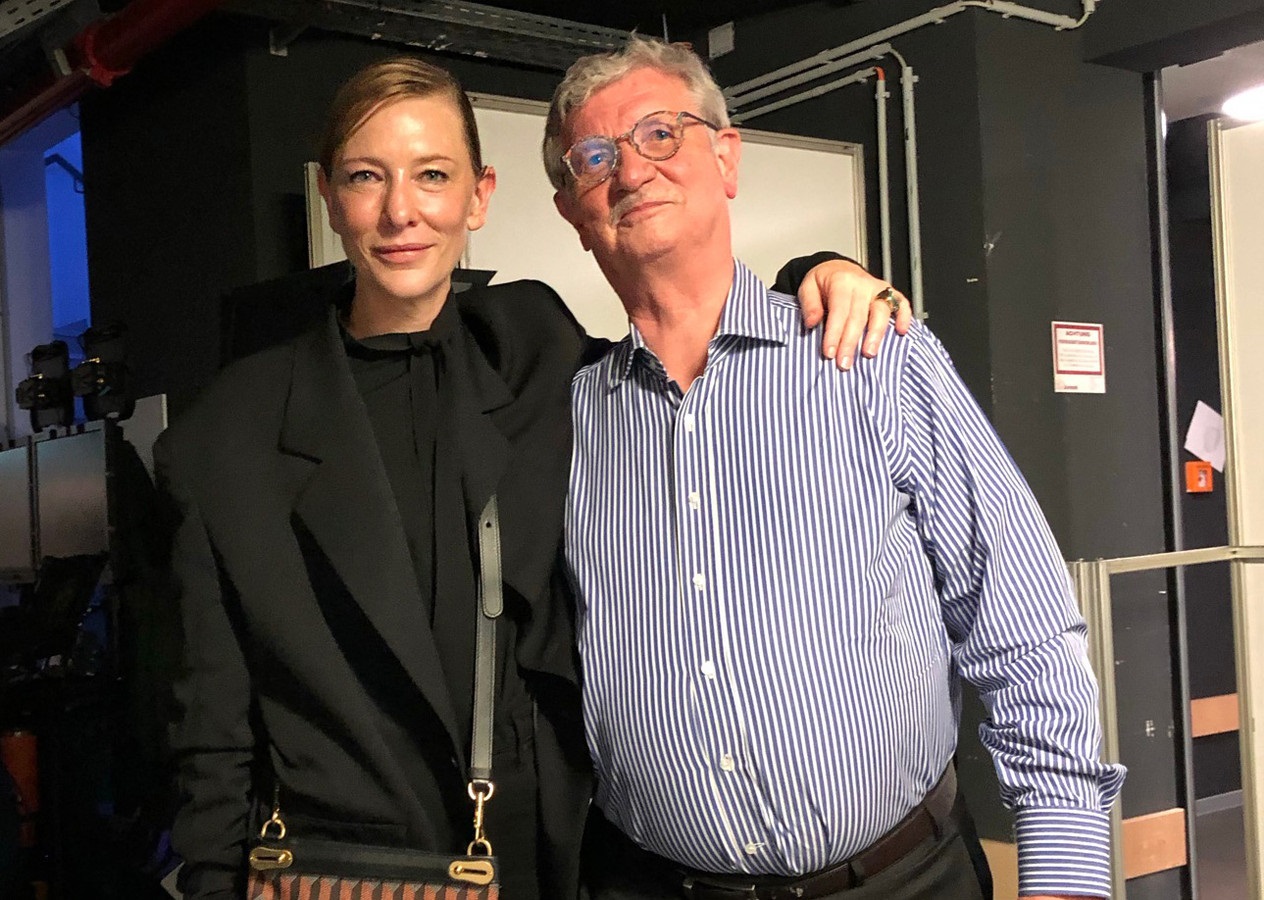
Cate Blanchett with Dutch composer and music producer, Job Maarse in Dresden in September 2021.
“Of course I knew who Cate Blanchett was!” Composer, producer, arranger and orchestra leader Job Maarse has worked with celebrities such as Boudewijn de Groot, André van Duin, André Hazes and tenor José Carreras, but never thought he would share the stage again with ‘the best actress in the world’ . He proudly shows some sneaky photos of the celebrity in action on the trestle in front of the Dresdner Philharmonie. “That woman is a wonder of the world.”
Maarse is not alone in this opinion. Cate Blanchett – who has already won two Oscars for her role as Katherine Hepburn in Martin Scorsese’s The Aviator and as an alcoholic, millionaire’s wife in Woody Allen’s Blue Jasmine – is perhaps the chameleon actress of her generation. It is almost no surprise that the Australian is also completely credible as a conductor who is accused of abuse of power with a #MeToo edge.
“Although I also experienced her uncertainly in those ten days,” says Maarse, who in the past regularly provided the sound recordings for classical concerts by the Dresden Philharmonie. According to the Dutchman, director Todd Field (Tár, referring to the last name of Blanchett’s character) was looking for a German orchestra for his film, which is mainly set in Berlin. That Blanchett would really conduct instead of physically ‘playing’ that role, apparently no one liked it.”
Dresden wanted to go all out. “Also because they could use some positive publicity. They are very good, but not very well known. And it is a bit ‘my’ orchestra after all”, he says proudly. “I had to make sure that the recordings sounded perfect from a sound point of view. They also just had a beautiful new concert hall, where they decided to record all the orchestral scenes. I later got a call from Todd, who was mixing all the music at Abbey Road Studios, with the compliment that everyone was raving about how good our recordings sounded.”
Maarse was an eyewitness to Blanchett’s drive to create a completely credible conductor. Before her arrival, she had already been trained full-time for three months by a conducting coach from Australia. With this lady she was always busy going through the scores between the recordings. She had to do part of Mahler’s Fifth Symphony, which is extremely difficult.”
“As I said, I sometimes saw her insecure,” continues Maarse, who also regularly waved the baton for an orchestra. Despite the fact that she loves classical music and plays a little piano herself. When she was through it, I talked her into some courage. She did fantastic. In fact, it all sounded a lot more exciting when she conducted instead of her coach. Everyone was impressed by Cate’s persuasiveness.”
To indicate how important the authenticity of Blanchett – also known from films such as The Lord of the Rings, Elizabeth and Carol – was for Tár: according to Maarse, conducting a notorious trumpet run from this particular piece of music had to be repeated at least thirty times. We had been doing it all day until at 11:00 PM right before the recording, Cate shouted to the orchestra members: ‘Now, please don’t fuck up.’, like a joke. She always remained cool, involved and in a good mood. Afterwards she brought champagne for everyone.”
Maarse wants to emphasize that his part in the film and Blanchett’s amazing acting performance was very modest. “But I was able to taste that Hollywood atmosphere. And if she does indeed win that Oscar later, which would be very justified, I was still happy with the genesis.”
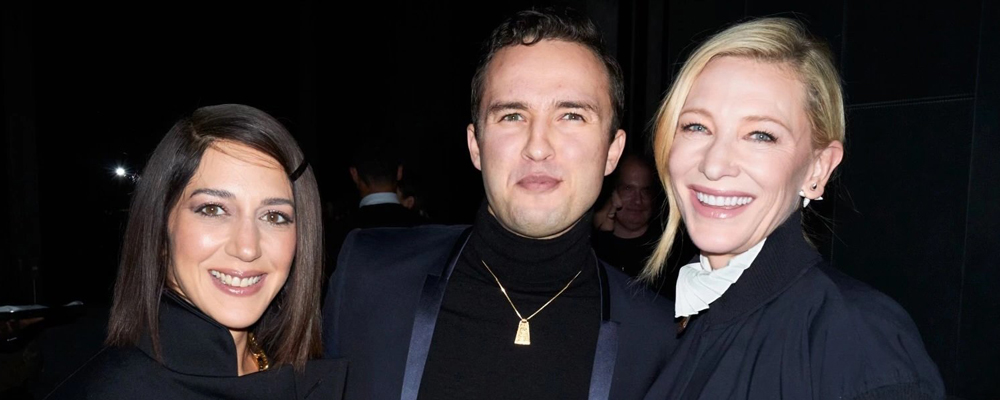
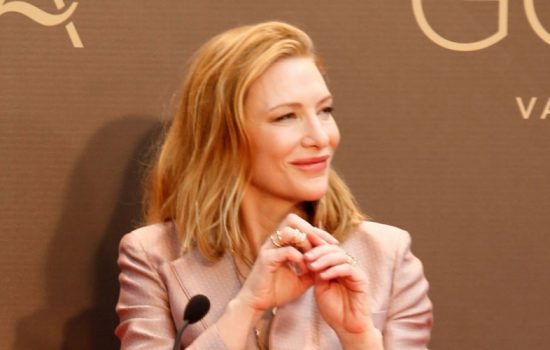
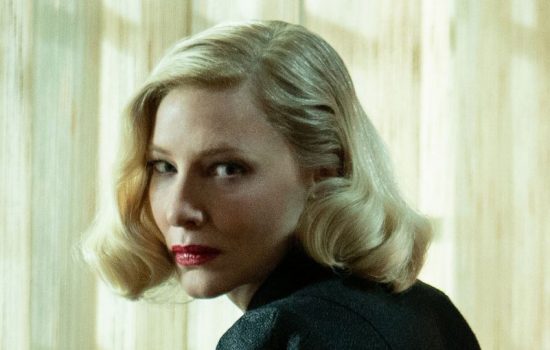
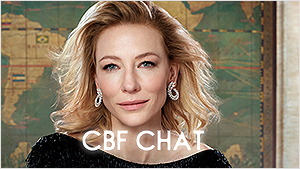
 A Manual for Cleaning Women (202?)
A Manual for Cleaning Women (202?)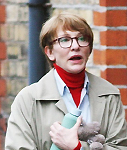 Father Mother Brother Sister (2025)
Father Mother Brother Sister (2025)  Black Bag (2025)
Black Bag (2025) 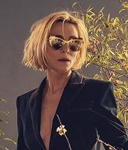 The Seagull (2025)
The Seagull (2025)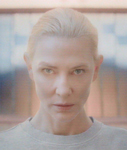 Bozo Over Roses (2025)
Bozo Over Roses (2025)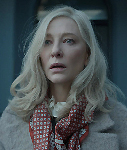 Disclaimer (2024)
Disclaimer (2024) 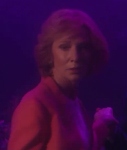 Rumours (2024)
Rumours (2024) 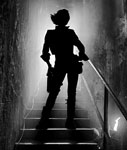 Borderlands (2024)
Borderlands (2024) 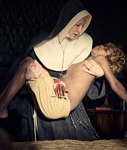 The New Boy (2023)
The New Boy (2023) 











